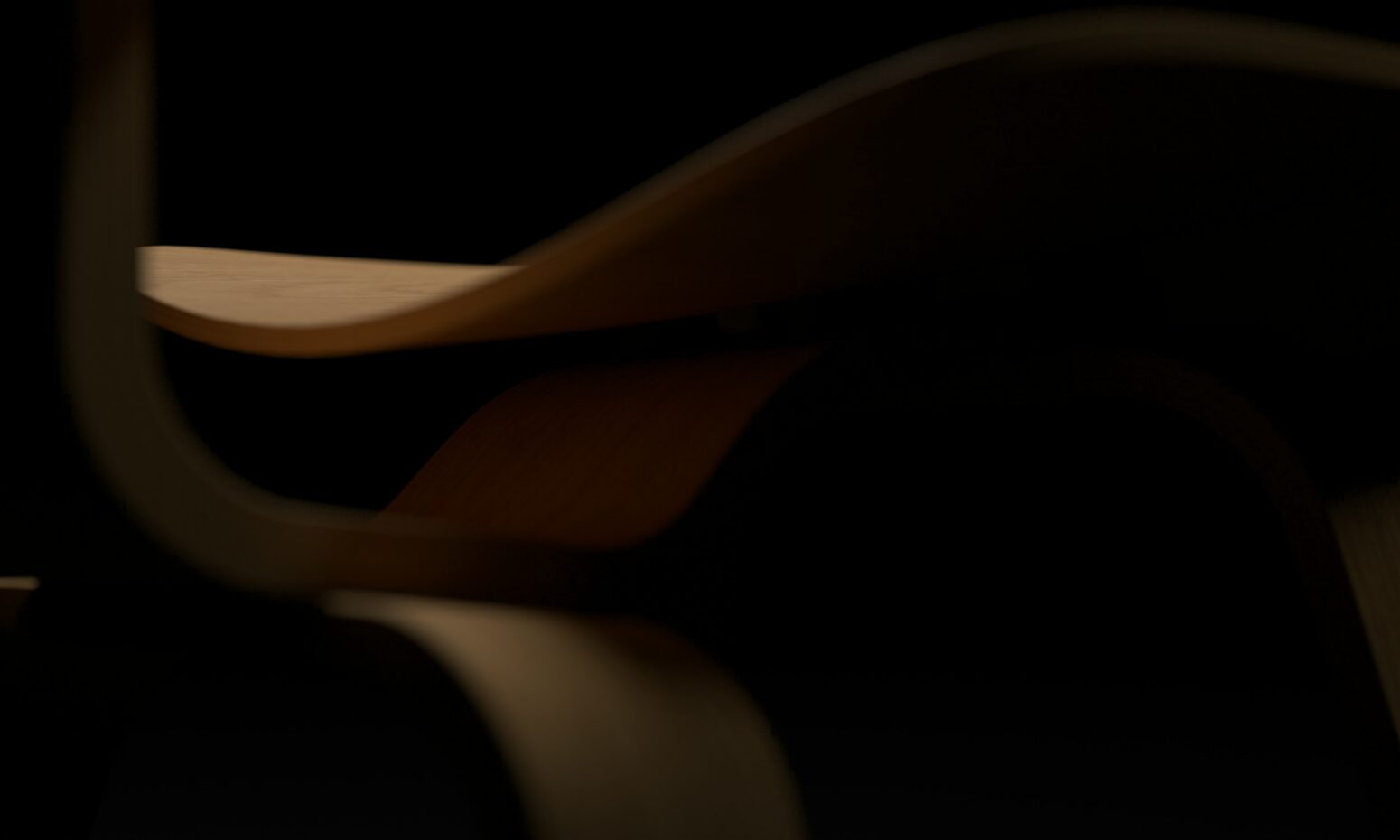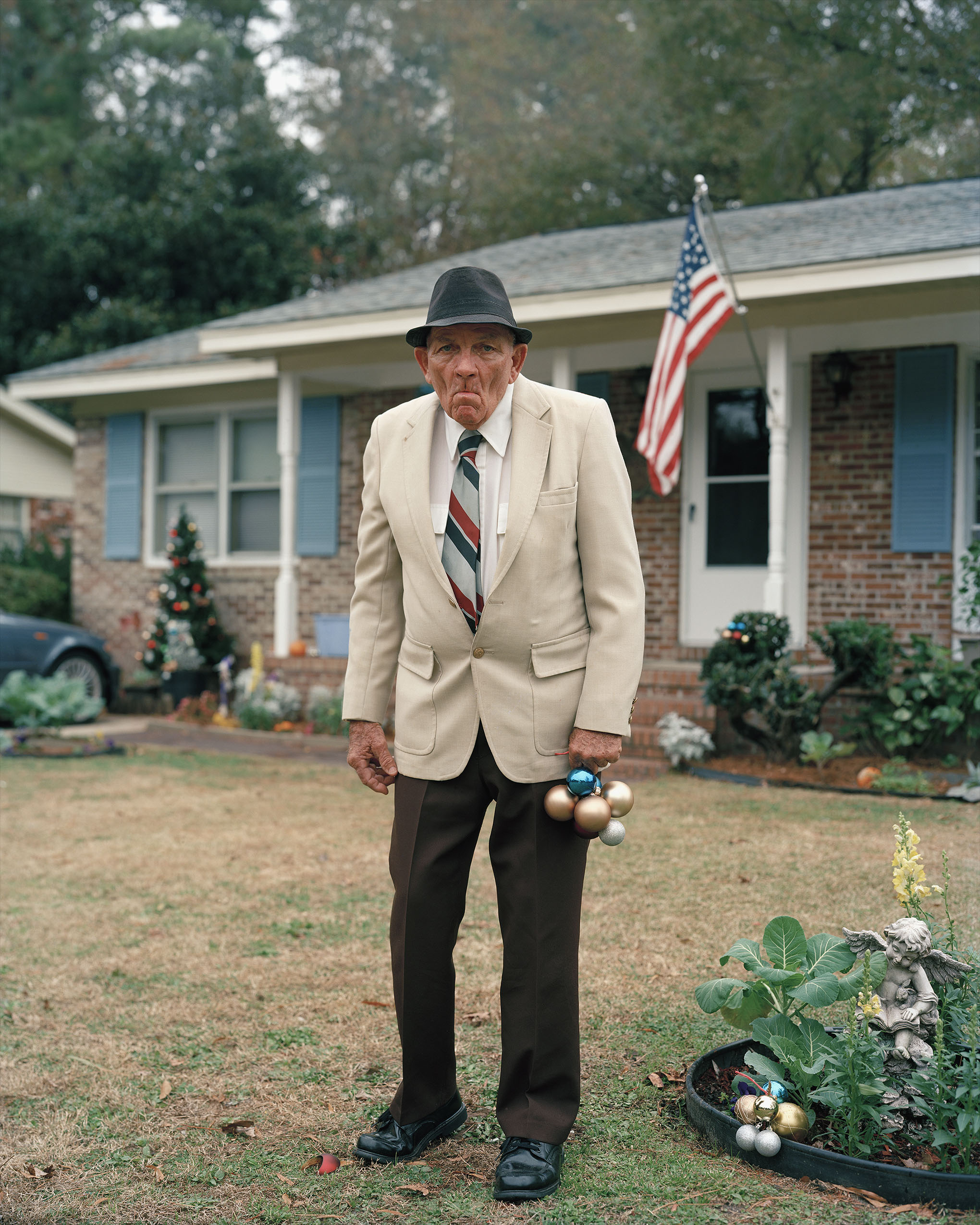Seventy-Seven Steps
14 Minutes Read Time

1. The chair was designed to withstand knocks and blows, the biting waters of the sea.
2. It’s known as the 1006 Navy Chair, first built by Emeco, the Electric Machine and Equipment Company, in collaboration with Alcoa, the Aluminum Company of America.
3. Commissioned in 1944 by the US Navy to be used on military vessels, the chair is light enough to lift with the tip of one finger.
4. It is made entirely of salvaged aluminum, its surface faintly reflective. Despite its appealing design, even what I would call beauty, the chair’s first obligation is to endure.
5. Estimated to last 150 years, this chair will outlive me.
6. When I used to visit my husband, Jeremy, onboard a destroyer or cruiser, I saw the Emeco chair in offices, staterooms, and mess decks, seemingly ageless and impervious to rough handling. I liked its chilly gleaming. The brushed finish looked almost soft, yet I knew the recycled metal to be nearly indestructible. One day, I told myself, I would position six of these same chairs in our dining room, the metal an appealing contrast to the pale wood of our table.
7. In those early days of marriage, I often pulled my military-dependent ID card from my wallet to study there my husband’s rank and pay grade, his Department of Defense ID number. In the top left corner was a tiny facsimile of the Great Seal of the United States and, alongside the eagle’s claw full of arrows, an almost illegible photograph of my face.
8. Dependent, from the Latin “to hang from, hang down,” as if I were one of those tags that swung from a metal chain around my husband’s neck. I had no rank or pay grade of my own. On my ID card, only the blurred image of my face belonged to me. The rest was my husband’s information.
9. Who was this man in service khakis I loved?
10. And who was I who loved him?
11. The silhouette of the 1006 Navy is reduced to the essence of chair: a straight back supported by three vertical slats meeting at a crossbar, a square seat gently contoured, four narrow legs joined by spindles, nothing extraneous or decorative.
12. If the chair were wood rather than metal, such a piece might be found in an old farmhouse in Virginia, almost early American in its profile, cut from simple tools, its sheen the result of many hands having touched it over decades, pulling it back from the table, wiping crumbs from it, rubbing its edges in a moment of thought.
13. In fact, Emeco now sells a wood version of the 1006 Navy. In a choice of walnut or oak, it is nearly five pounds heavier than the aluminum model.
14. Eames Demetrios, the grandson of renowned designers Charles and Ray Eames, once shot a short film about the 1006 Navy Chair.
15. In the film, 77 Steps, there are close-ups of sheets of metal cut into ever smaller strips.
16. Metal bent at keen angles. Metal welded to metal. Metal ground and clanking, clicking against itself, submerged in a salt bath, heated, metal brushed to the sheen of a foggy mirror. Metal anodized to an almost-diamond hardness.
17. At the end of the three-minute movie, each chair—having been constructed in a process with seventy-seven distinct steps—is wrapped up and sealed in a sturdy box, shipped off, no doubt to a big-city restaurant or hotel, this object having become in the past twenty years a symbol not of war but of upscale design.
18. Let me name another chair formed during war: the Eames LCW, which stands for Lounge Chair Wood.
19. The first time I sit in the LCW, I am surprised how well I fit.
20. The molded plywood flexes slightly. Rubber shocks are mounted where they can’t be seen to bear my bulk.
21. As soon as I forget I’m sitting in a thing that seems too light and low, too artful to hold a body up, I feel the comfort of its contours against my spine.
22. The LCW looks more like a sculpture than a place to place oneself. The grand sloping of the seat and seatback are joined by the curve of a brace beneath, with all three pieces perched on legs, a pair of U’s bent upside down.
23. Although the LCW was first released in 1945, at the start of a new peacetime, Charles and Ray Eames began experimenting several years earlier with the technology that would be applied eventually to the production of their iconic chair. As part of the war effort, they constructed an inexpensive splint of bent plywood to be used by American medics on the battlefield.
24. While metal splints vibrate, often causing more damage to the wounded, plywood moves with the movements of those hurt bodies that are carted away from the fighting.
25. The splint resembles a giant tongue depressor, the plywood gone golden with age, small holes poked in the rounded shape where the device would have been fixed to a leg.
26. The original splints can now be purchased from antique dealers for approximately $1,600.
27. The LCW, although sheathed in a veneer of glistening walnut or ash, is still identifiable as plywood too.
28. Demetrios writes in his book An Eames Primer (Universe Publishing, 2001) that after World War II, “Charles and Ray continued to refine an idea that became a pillar of their design process: the ‘honest,’ or unself-conscious, use of materials. In other words, if a chair was made of molded plywood, it should show the molded plywood, not try to conceal it, and honor the plywood’s inherent qualities.”
29. Kneeling to study the edge of the LCW, I count the individual layers: the plies—pliable, from the French plier, to bend—that have been glued and then pressed together, heat reforming them into the contours of a chair.
30. And when I place myself in it, I feel the slight give of the materials. Sitting in the LCW, my muscles untense. I am shielded by its structure. The chair is true to its origins, a thing designed to protect an injured soldier dragged from the field, dragged across ditches, dragged through dirt, while horror ricocheted nearby or exploded with shrapnel.
31. Wood as softness. Wood as safeguard. Wood carrying the weight.
32. But the 1006 Navy doesn’t offer shelter.
33. Its metal frame never warms against skin. The seatback permits only a rigid, vertical posture. It demands military precision from the one who sits on it.
34. This is a chair intended for long hours of work, a sailor situated before an instrument panel in the machinery room, watching gauges move or not, watching the warning lights flash or not.
35. And here is another chair made during war, this one created by the Danish designer Jens Risom. It’s low to the ground and is meant for lounging. Its frame is unstained maple, a crisscrossing of thick cotton tape woven in and out to form the seat and back.
36. Jens Risom’s lounge chair was the result of wartime rationing and scarcity. It’s constructed with as little wood as possible, and the cotton webbing originally came from surplus parachute straps.
37. The chair was so important to Risom’s career that it figured prominently in his New York Times obituary: “Defined by sharp Scandinavian lines and fused with the rustic aura of Shakerism and American arts and crafts, the armless, affordable chair that became Mr. Risom’s signature in 1942 was one of the first mass-produced modernist furniture pieces introduced in the United States and not Europe.”
38. The chair, characterized in the designer’s obituary as “perhaps too humble to ever be described as a masterpiece,” doesn’t take up much space. It is mostly air and the absence of materials.
39. When I sit in the Risom chair, I can imagine that I have been falling and falling, its seat the only thing that slows my descent.
40. It would be easy to sleep in its organic shape; the wood has the same curve as a figure in recline, and the webbing is neither too taut nor too slack against the body, stretching just enough to reassure.
41. Our dog, Argos, loved the Risom chair more than any other object in the house.
42. By the time Argos was full-grown, he had discovered that the seat was the perfect height on which to lay his chin. He often stood beside the chair, flattening his face against the webbing, his brown expressive eyes following us as we tried to avoid his gaze. The gesture meant Time for a walk or else Come play with me.
43. Risoming, we called it.
44. Argos’s silence was maddening, that he could lean against the chair for ten or twenty minutes, still as a piece of furniture himself. In this patience, he most resembled his literary namesake, the dog who waits two decades for Odysseus to come home: ten years while the king helps win the Trojan War, followed by another ten as he follows a twisting, god-plagued path back to the island of Ithaca. Argos lives just long enough to see Odysseus limp through the palace gates, wearing the disguise of a beggar. Or, as Emily Wilson translates the scene:
So Argos lay there dirty,
covered with fleas. And when he realized
Odysseus was near, he wagged his tail,
and both his ears dropped back. He was too weak
to move towards his master. At a distance,
Odysseus had noticed, and he wiped
his tears away and hid them easily.
45. We knew our dog’s name would be Argos, long before my husband brought the puppy home.
46. Jeremy and I met as undergraduates in our senior year, at a college that calls itself the Great Books School. There, The Odyssey is the second text all students read. The first is The Iliad.
47. If The Iliad teaches what it means to be a soldier gutted on the battlefield, then The Odyssey illustrates what happens when a warrior gives up on combat. The Iliad begins with rage, The Odyssey with the tears of Odysseus, “the pain / he suffered in the storms at sea,” while the king tries to return to a family of strangers, his wife, Penelope, and his now-grown son, Telemachus.
48. Nearly a year into our marriage, my husband and I were finally living together in the same state, sharing for the first time a bathroom sink, a couch, a kitchen table.
49. Soon, Jeremy would be given a new billet and sent to a new ship, perhaps in Norfolk or Bahrain or Yokosuka.
50. I would be the patient wife, and Argos would be a sentry, the way dogs often are, waiting for Odysseus. In those early years, I wrote so many poems about our roles, even speaking in the voice of Penelope,who weaves her vigilance into a shroud.
51. After our own Argos died, we moved the Risom chair from a prominent place in the living room to a corner of the office where we wouldn’t have to look at it every day, be reminded of the furred warmth now absent.
52. Here is what I understand: war can lead to innovation. Think: canned food and menstrual pads. Think: the ballpoint pen. Think: all the novels and poems I have spent decades reading.
53. I understand this too. Innovation can entice the eye. It can be well and wisely formed, crafted from materials we might describe as being honest or having integrity. Innovation can produce a chair so attractive—reduced to the purest form of chair qua chair—it becomes a status symbol. Oh, this, a homeowner might say, gesturing as though with indifference at the costly piece of furniture in the corner, why that’s an original Risom, circa 1943.
54. But what to feel about these attractive chairs, emerging, as they did, out of the effort to rescue the bleeding and the bandaged, out of scarcity and collision?
55. Sometimes I am grateful for the elegance of such objects. They are lyrical in the way a line of verse is.
56. Or I feel—what should I call it—amazement that horror can lead to ingenuity.
57. How creative, I think, that parachute straps were repurposed to make a woven seat.
58. It’s easy to delight in the unforeseen discoveries of war, the fact that constraints and deprivations once led to an aluminum chair so durable it could be thrown from the fourth story of a building without suffering a dent.
59. It is more difficult to ask myself:
60. Why have I brought the traces of war inside my home so willingly?
61. For many years my husband’s uniforms hung in our closet, khakis and coveralls, summer whites, dress blues so dark they could be mistaken for a shade of black. I often pressed my finger against the lacquered opacity of a shoe to leave my print behind. I liked to take down, from the top shelf, the plastic tacklebox where Jeremy stored his ribbons and medals. I would lift the lid, admiring the box’s simple but clever design, the trays sliding open, tiered like a tiny staircase, to reveal their contents. There were dozens of compartments filled with objects—striped or gleaming, oak leafed or starred—whose meanings I still don’t know.
62. Of course, I do know why I have been so eager to bring the war inside my home, its ghosts and whispers.
63. Because, for nearly fifteen years, I was married to the military,as the saying goes. That’s what we say: married to the military. The expression is synecdoche, a part standing in for the whole , my husband not merely himself but a piece of the larger machinery. The chairs too are synecdoche, each one a little portion of war, the care that is needed to cushion bodies, the imperative to bear all burdens and blows, the vertigo of tumbling from the sky.
64. Because I have loved my husband, even when I haven’t understood what service made him.
65. Made of him.
66. Makes of him.
67. Even now, two years after his retirement from service, I can still see the contours of his training in daily rituals.
68. It is there in the way he scoops a mound of shoe polish from the tin. He rubs the darkened cloth across the leather, small circles of shadow erasing every scuff. His movements are precise and practiced. By the time he finishes, the boots have a regulation shine.
69. It is there in the creases he irons in a shirt. It is there in his early waking, minutes before the clock begins its sharp alarm. Long after her husband returned from the war, Penelope too must have seen Troy in the gestures of Odysseus’s hands.
70. Sometimes I imagine a short film that documents all the tiny steps that made my husband.
71. There are close-ups of Officer Candidate School. A body bent at keen angles. A body ground and clicking against itself, a body submerged in water, a body overheated, a body running in the fog.
72. At the end of the three-minute movie, the body is sent to stand watch aboard a minesweeper. The body is sent to an engine room on a cruiser where it kneels in the grease and oil.
73. But I wouldn’t want to watch that film.
74. Instead, let me show the two of us sitting together at a table. There is breakfast. I reach across with a fork to a pierce a bite of pancake from his plate. He steals a sip of my coffee. If borders remain between us, they are more permeable since his retirement. Somewhere in another room, the news plays on the television, the sound of war faraway and small.
75. Jeremy no longer wears a pair of clanging tags around his neck, the metal stamped with his name, social security number, blood type, religion. I have a passport and a driver’s license. There is nothing in my wallet to identify me as dependent on this man.
76. We face each other.
77. And, perhaps, when we shift in our metal chairs, we feel the surfaces beneath us, materials that have been soldered or ground. The chairs have been tempered. They don’t deny where they came from or what they are, however hard and unyielding.
Read more from Issue 19.2.

